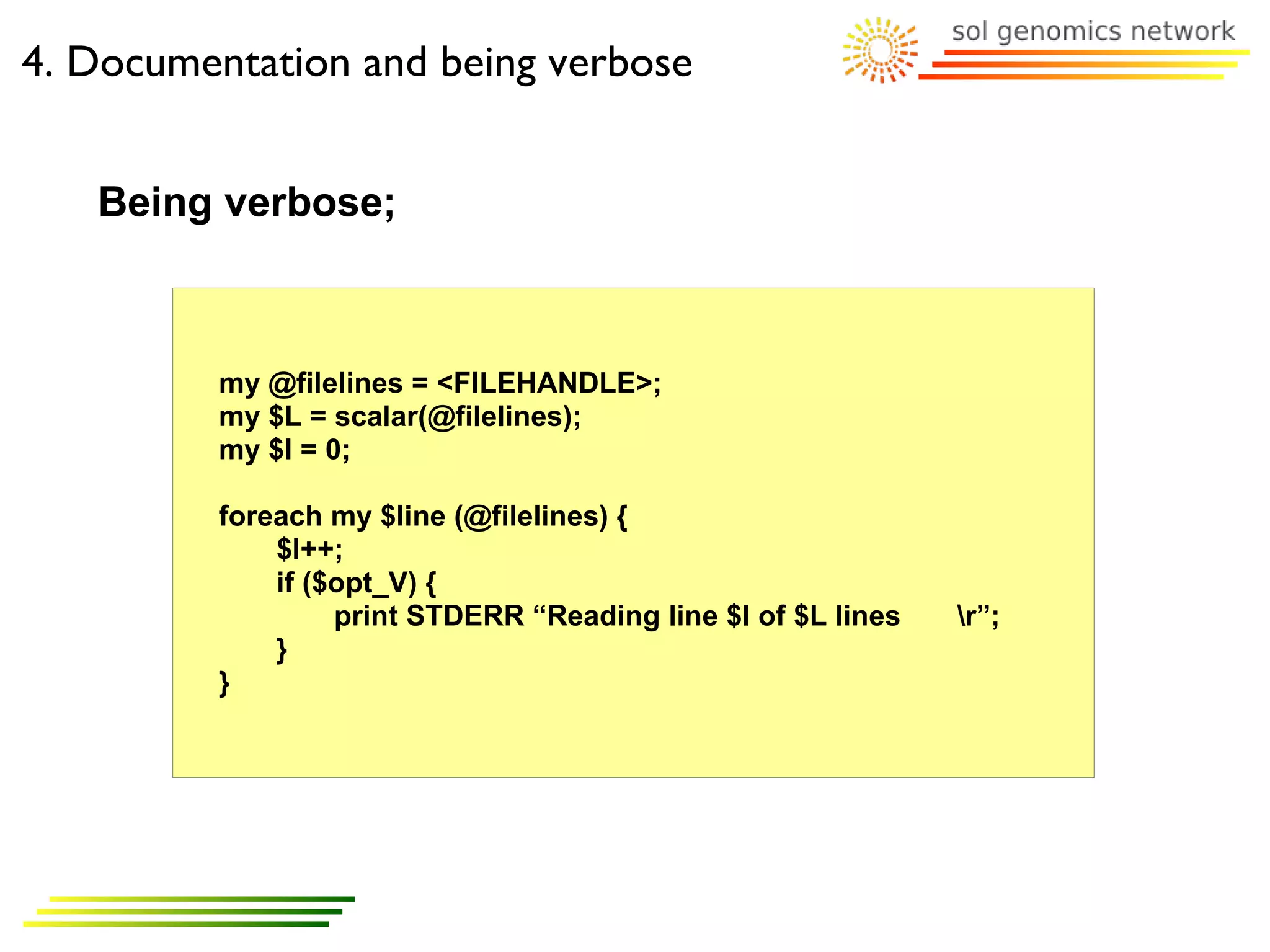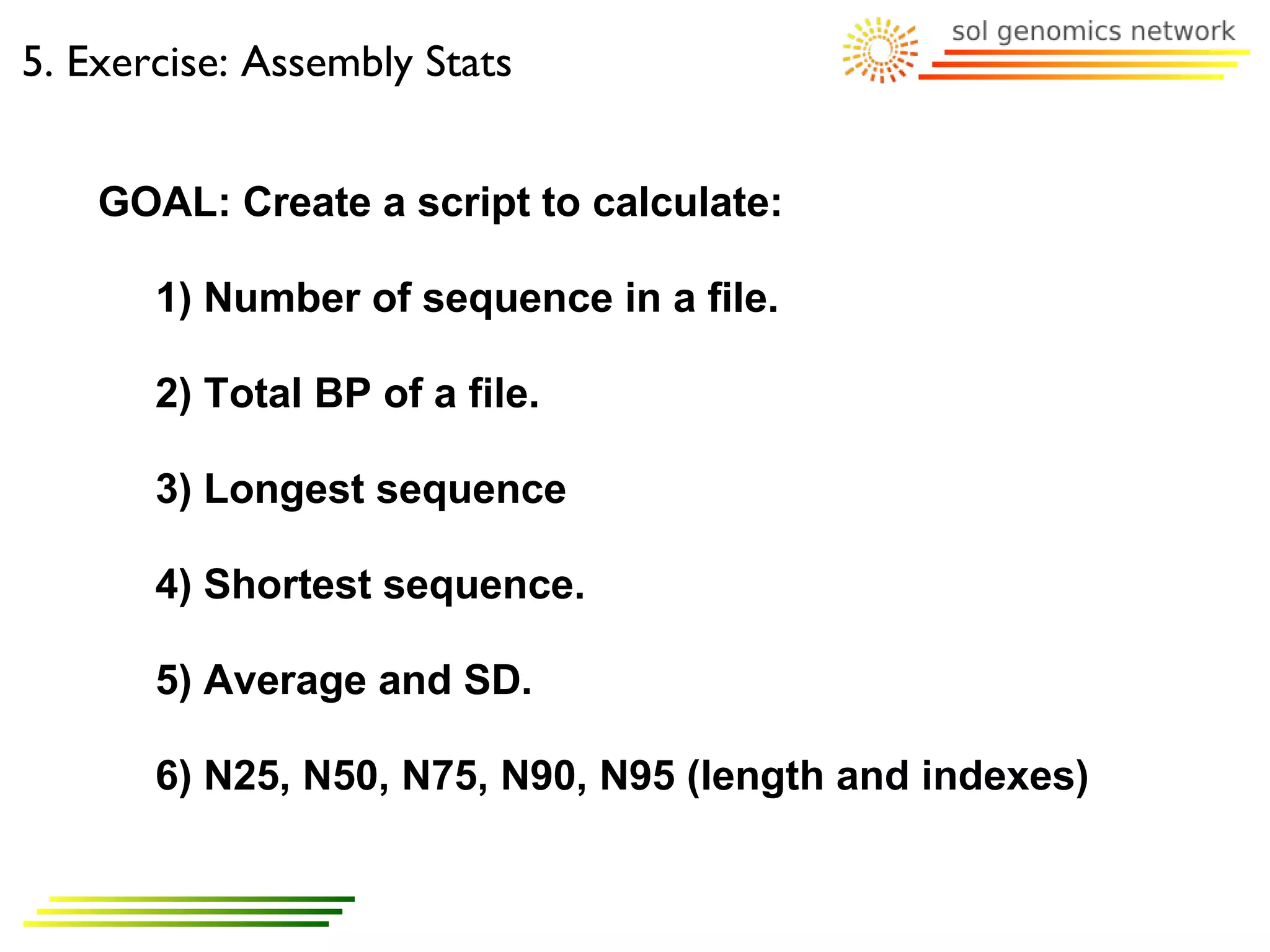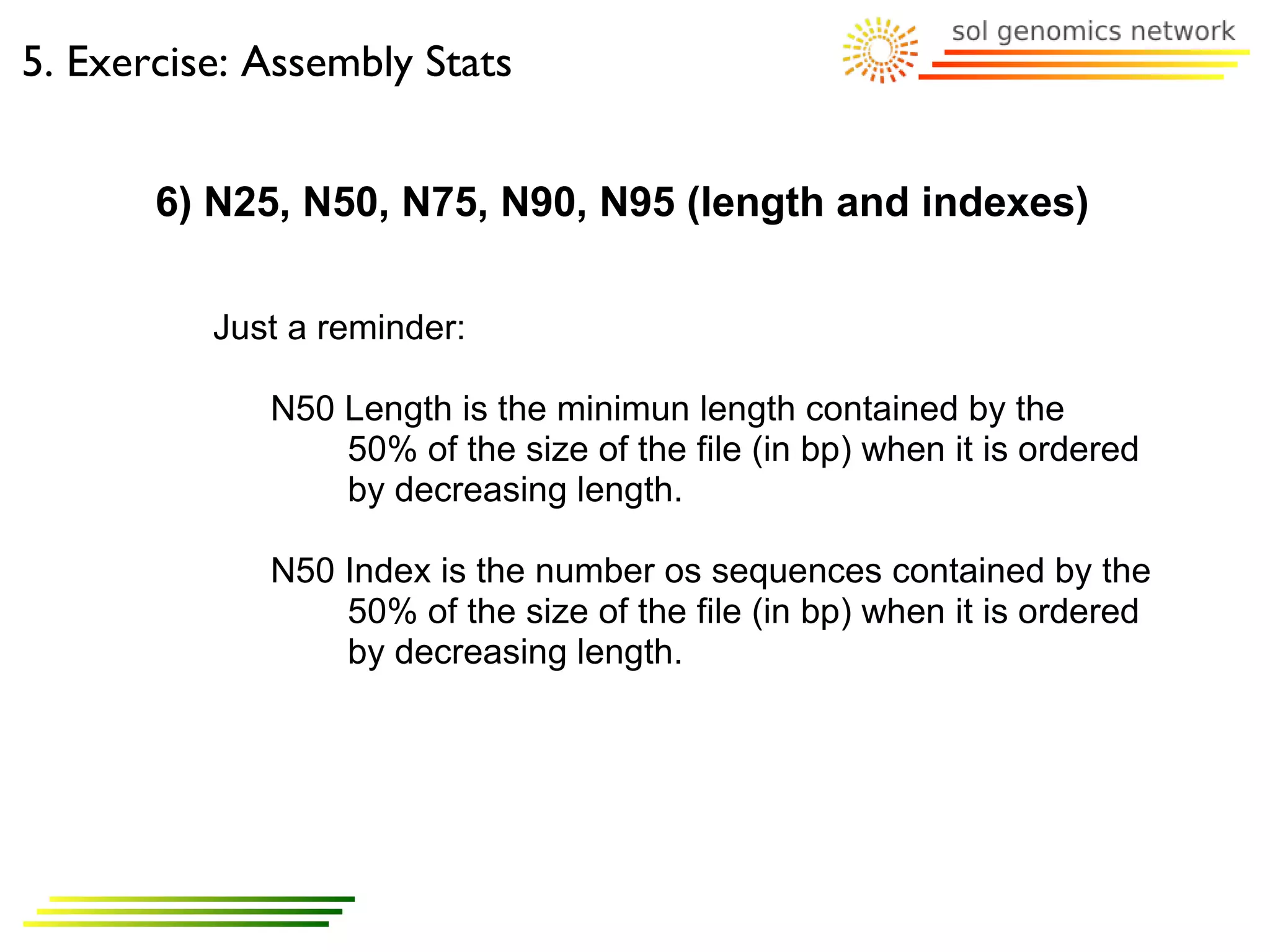This document provides instructions for writing Perl scripts. It discusses four mandatory lines that must be included in every Perl script, useful modules for files and options, documentation methods, and an exercise for calculating assembly statistics from a file. The four mandatory lines are the shebang line, and lines to use warnings, use strict, and end the script. Useful file modules include File::Basename and File::Spec, while GetOpt::Std handles command line options. Documentation can be included through comments, perldoc, or print statements. The exercise involves calculating metrics like total base pairs, longest/shortest sequences, N50, and related values.
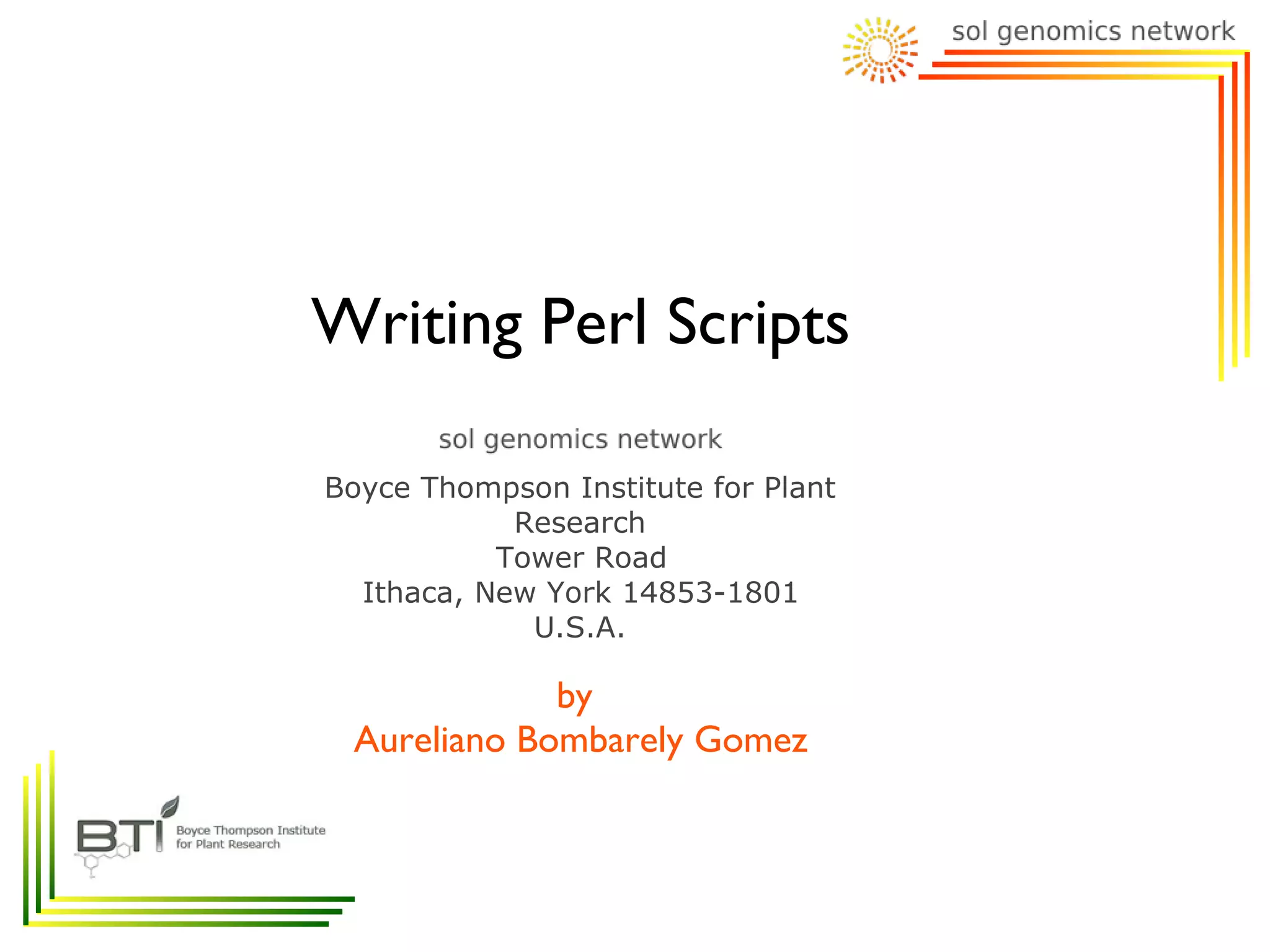
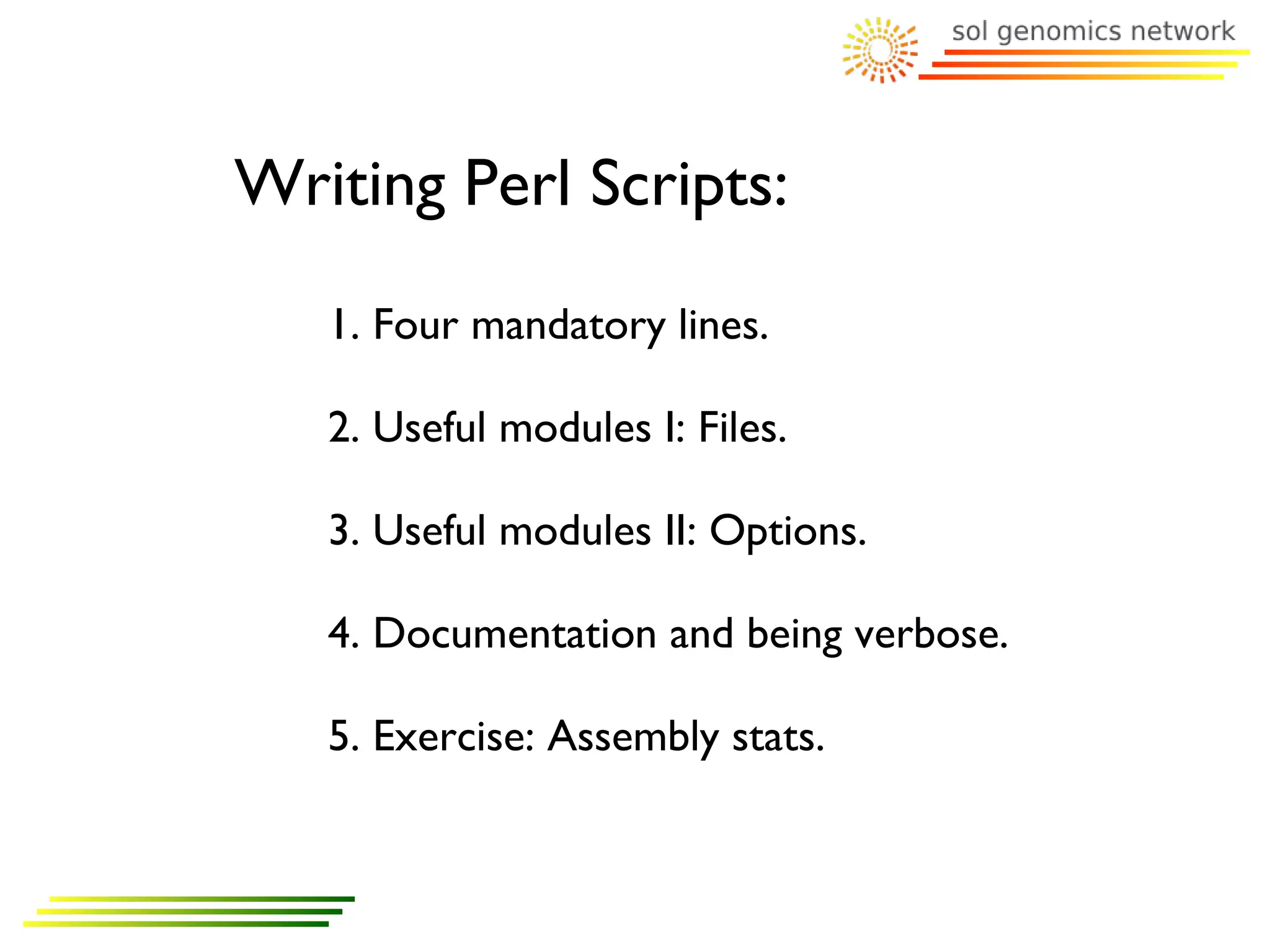
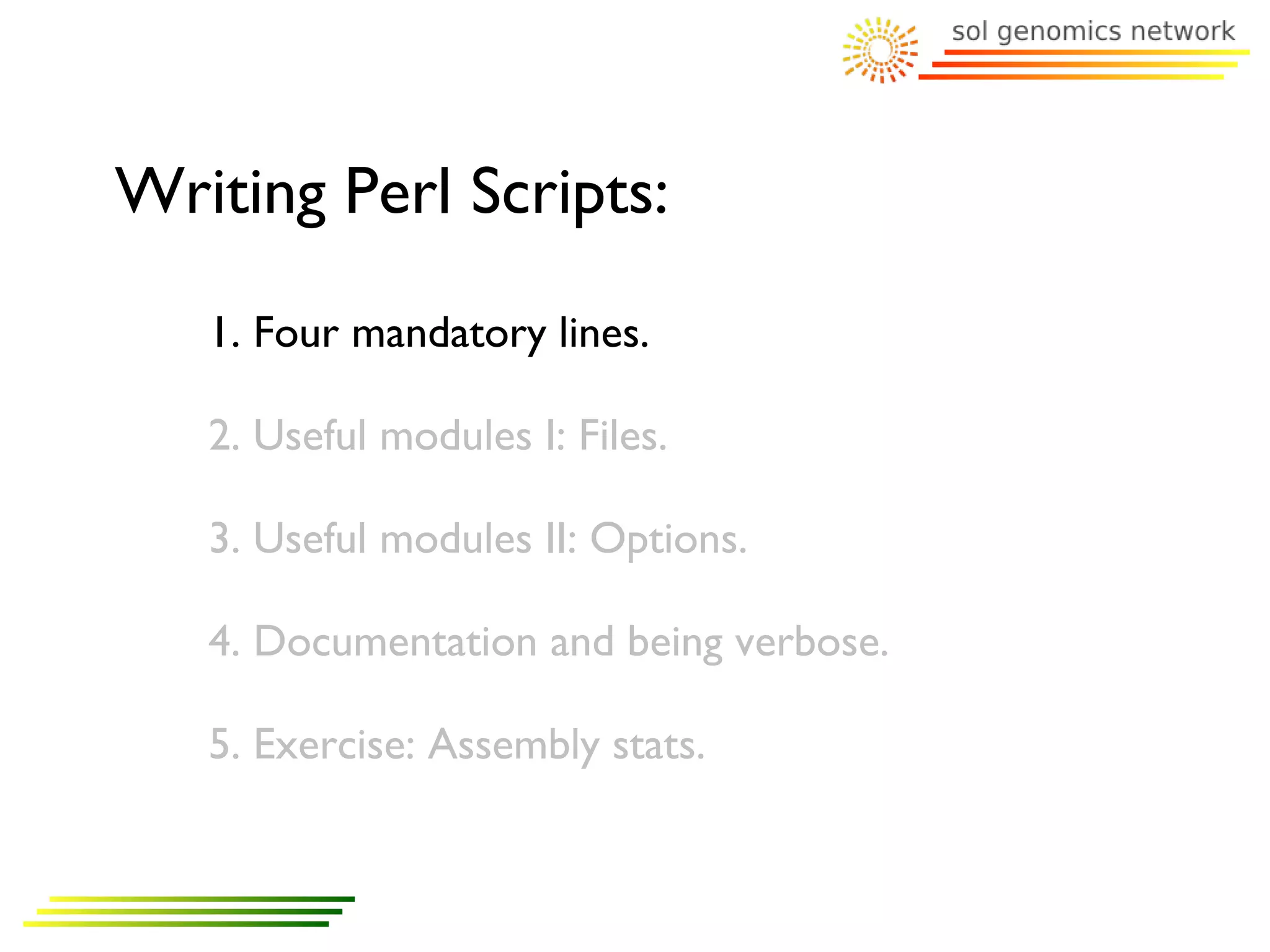
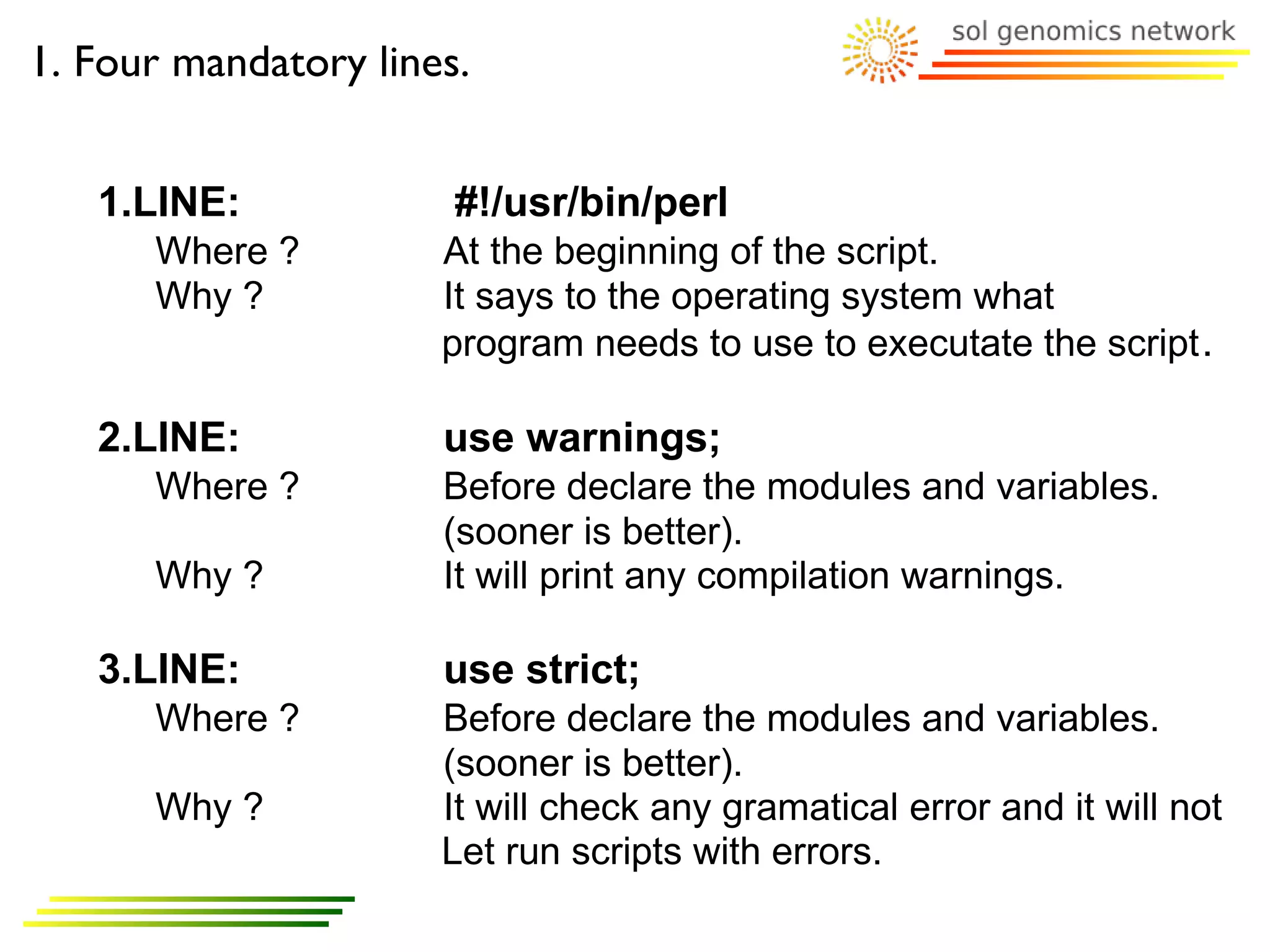
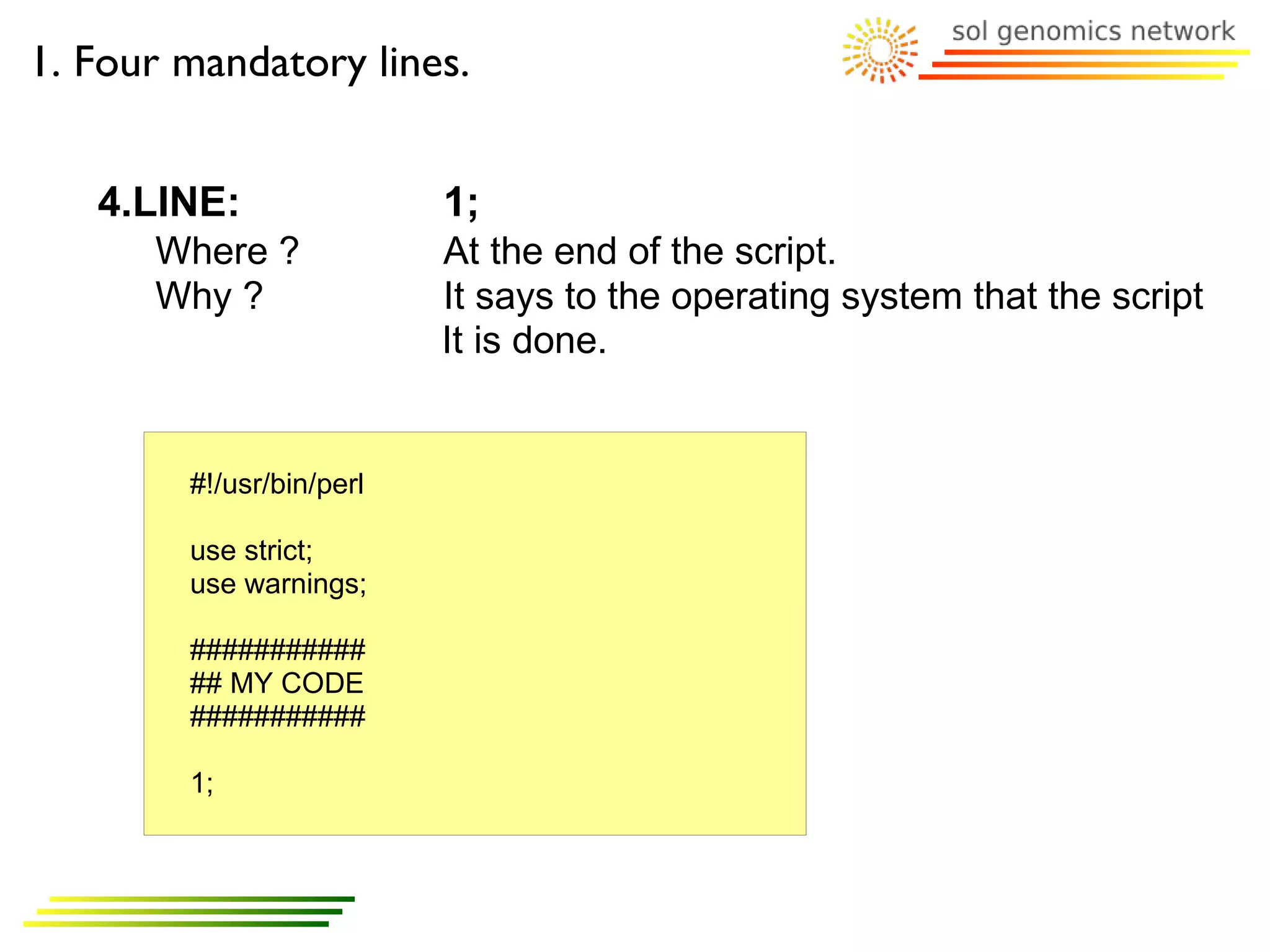
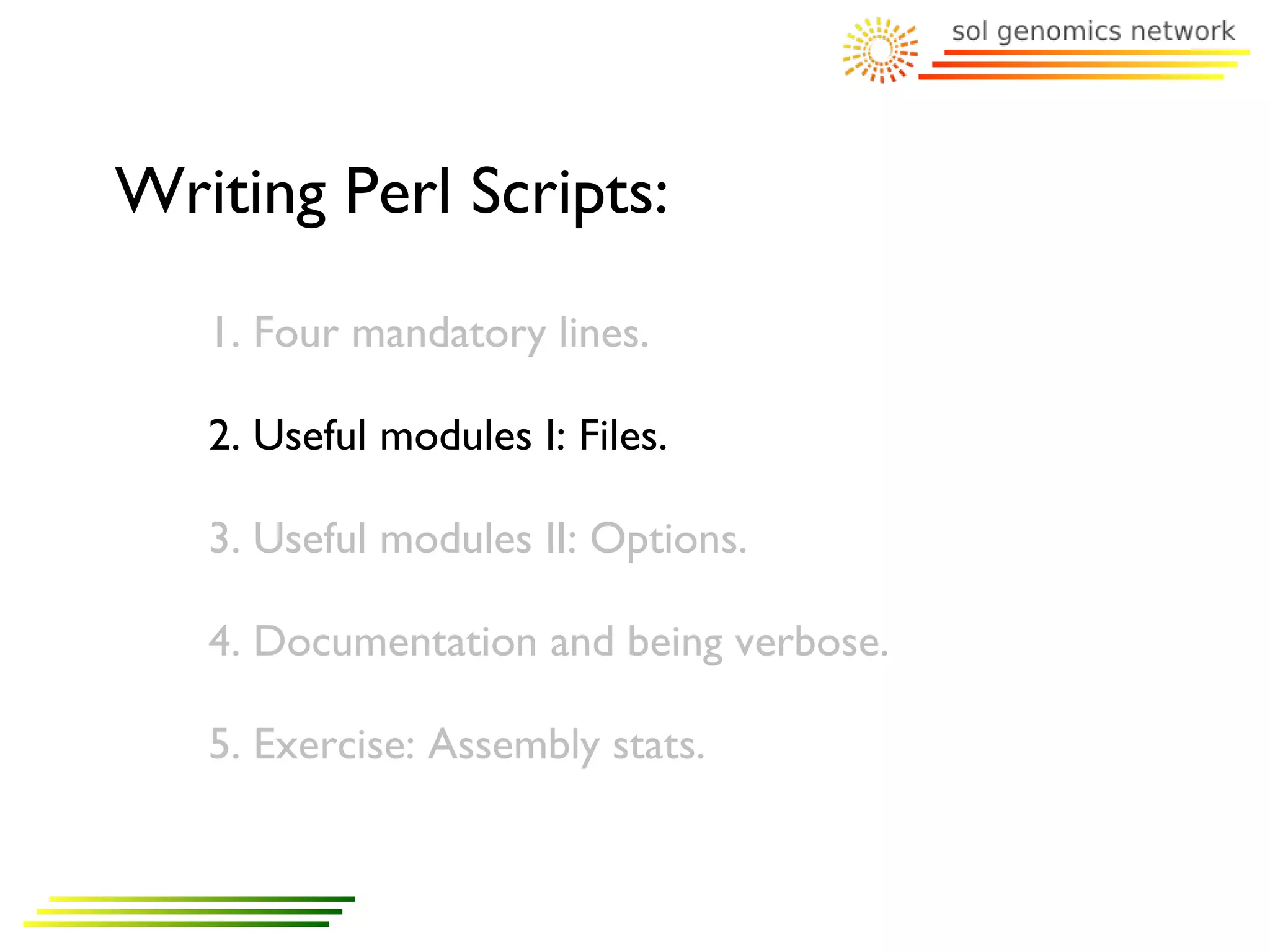
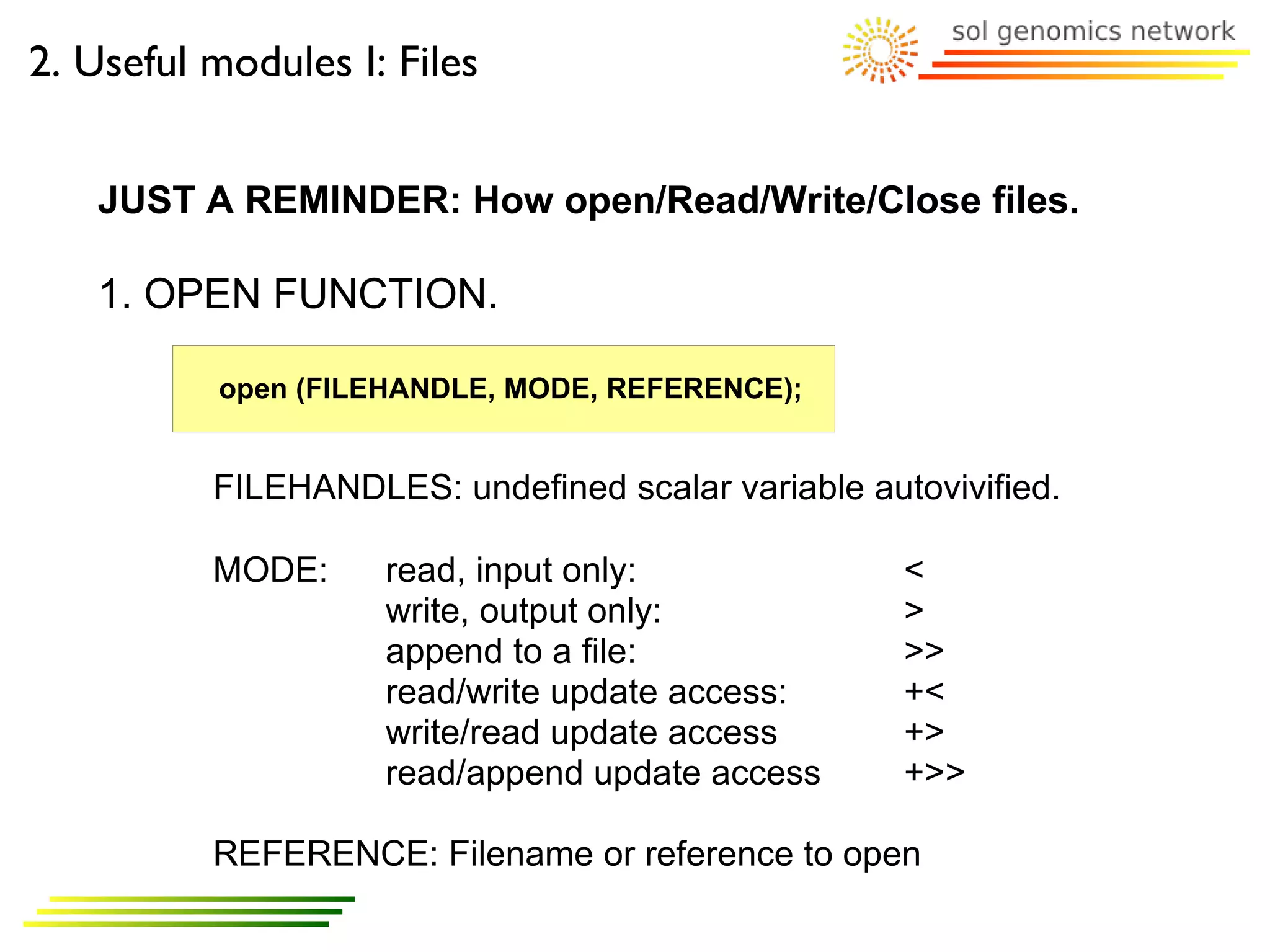
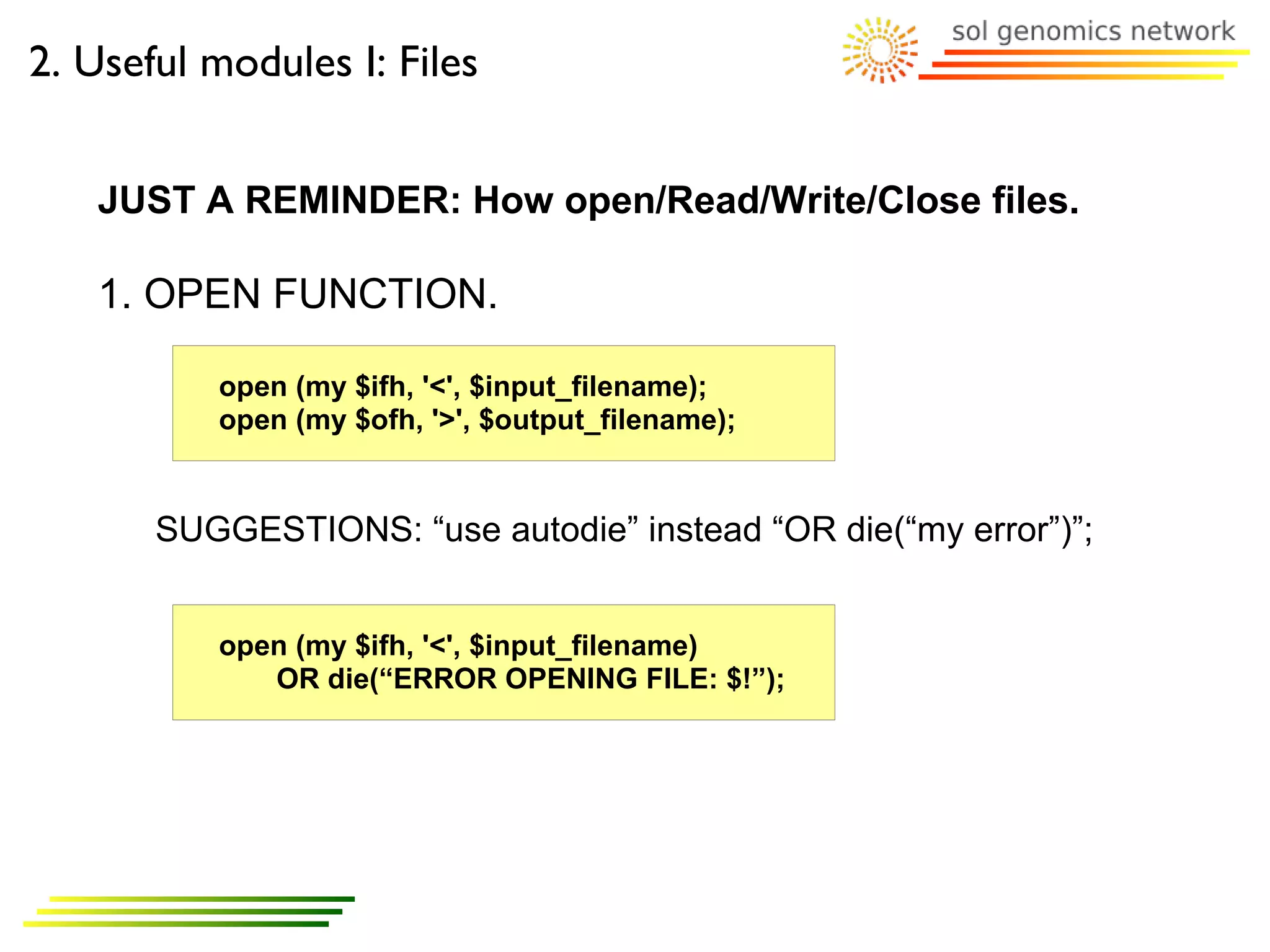
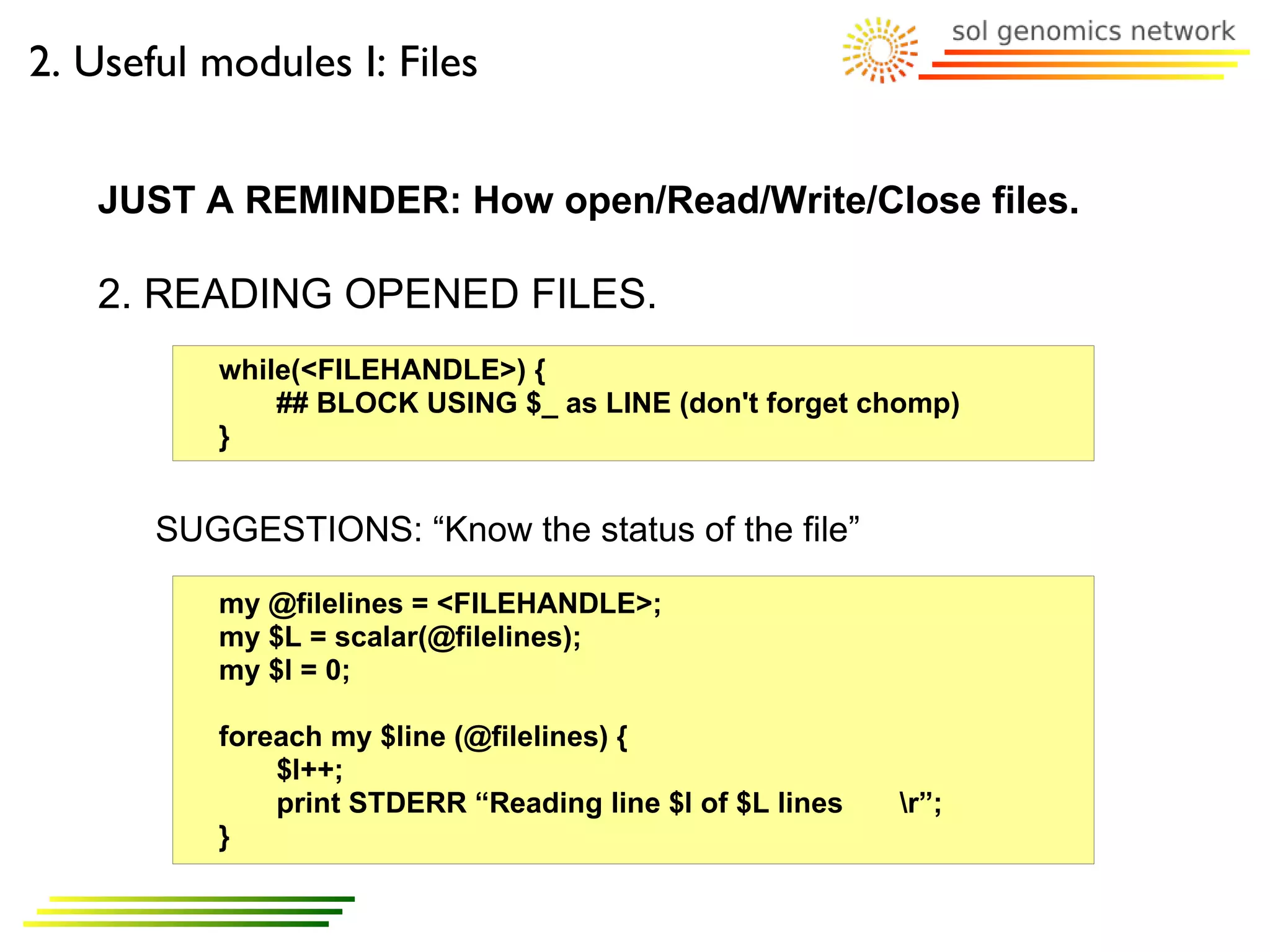
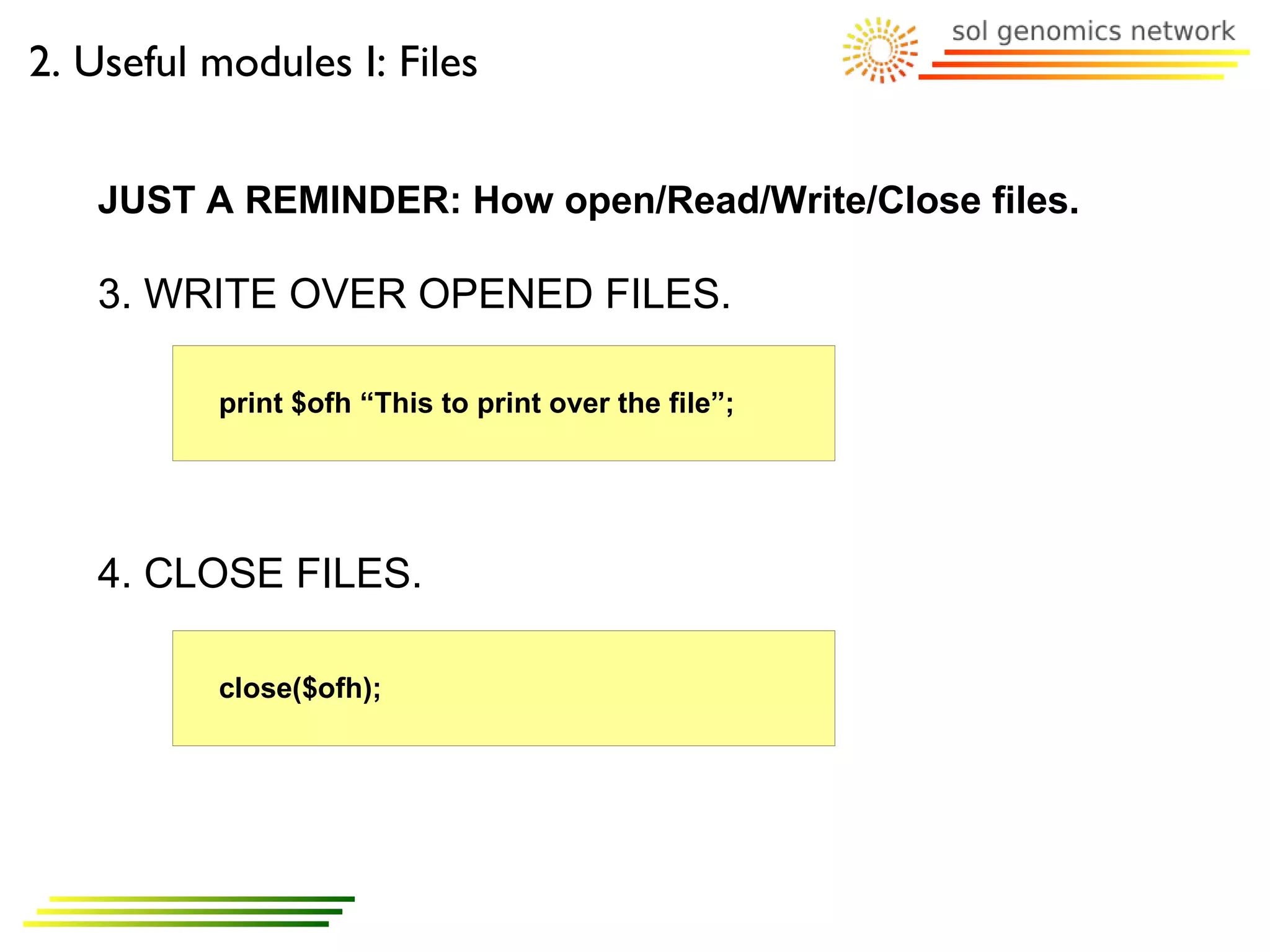
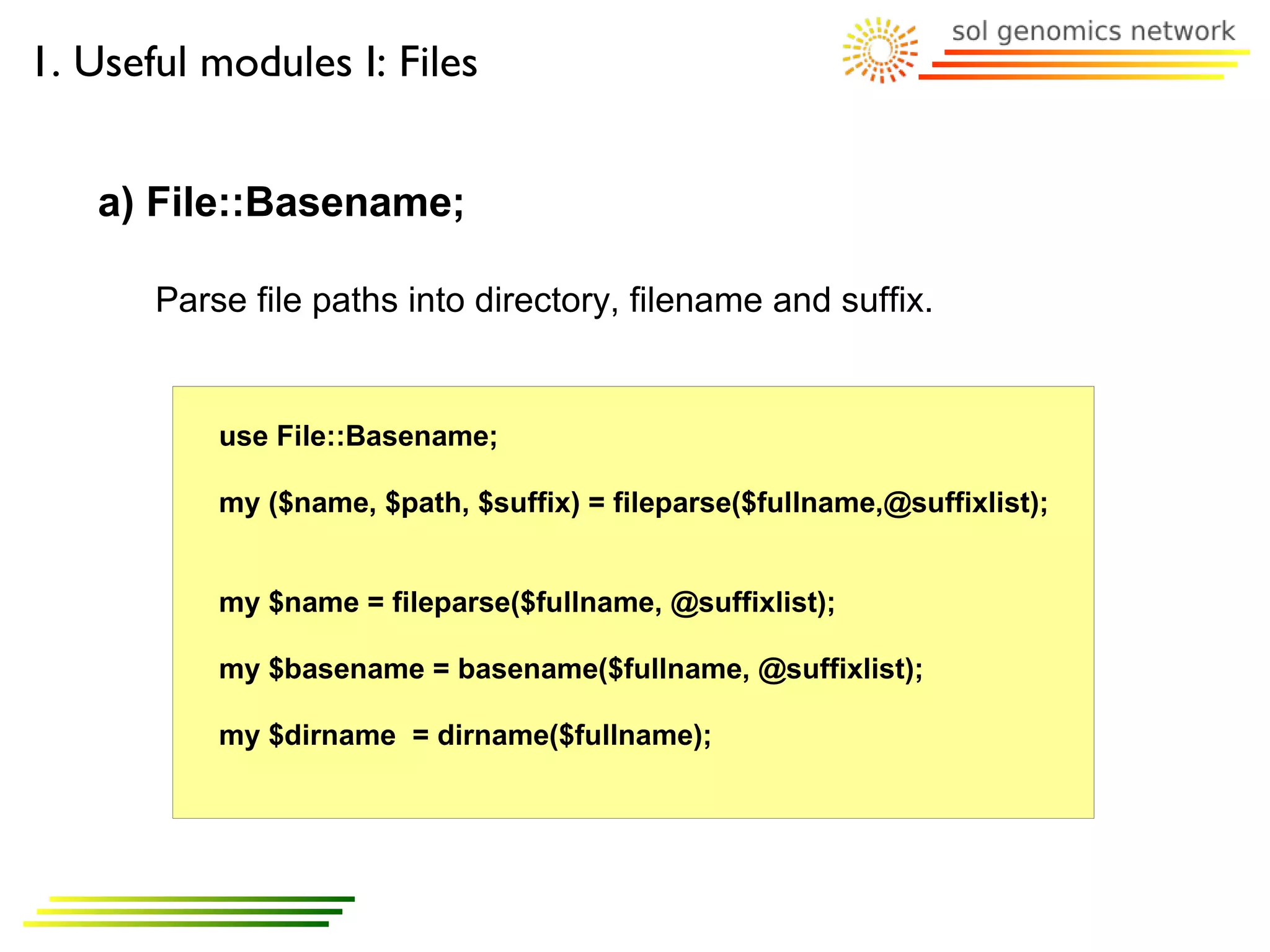
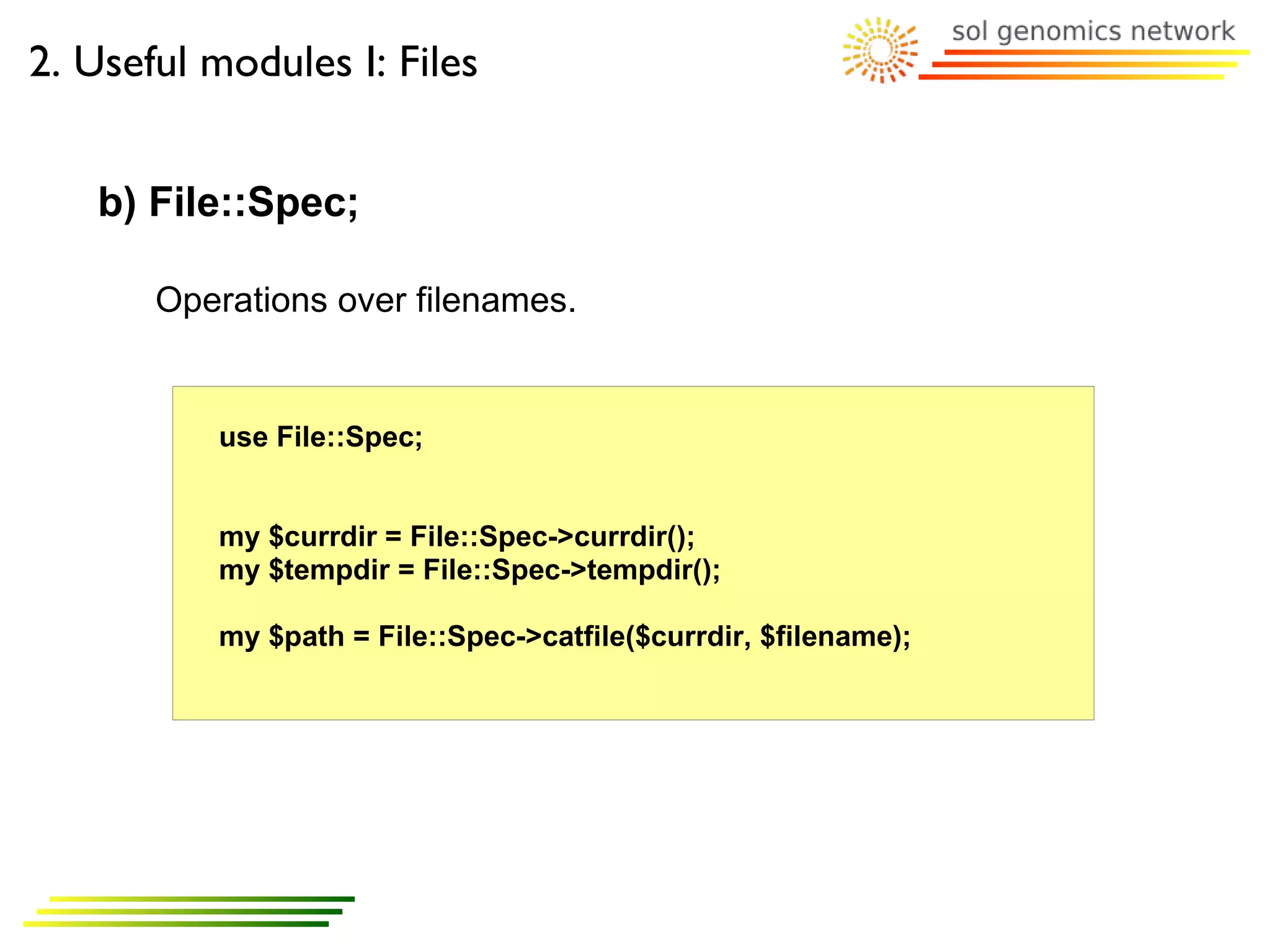
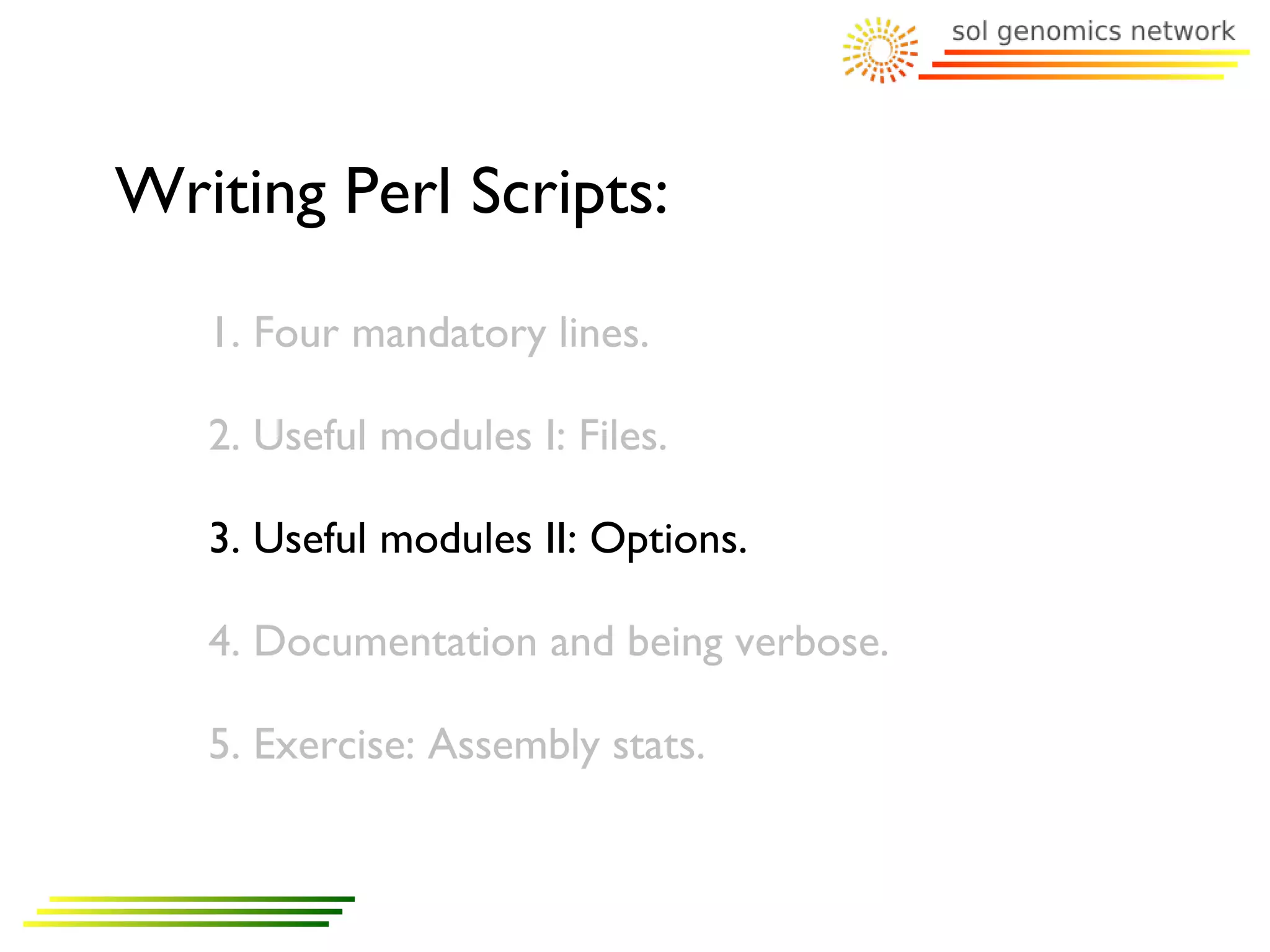
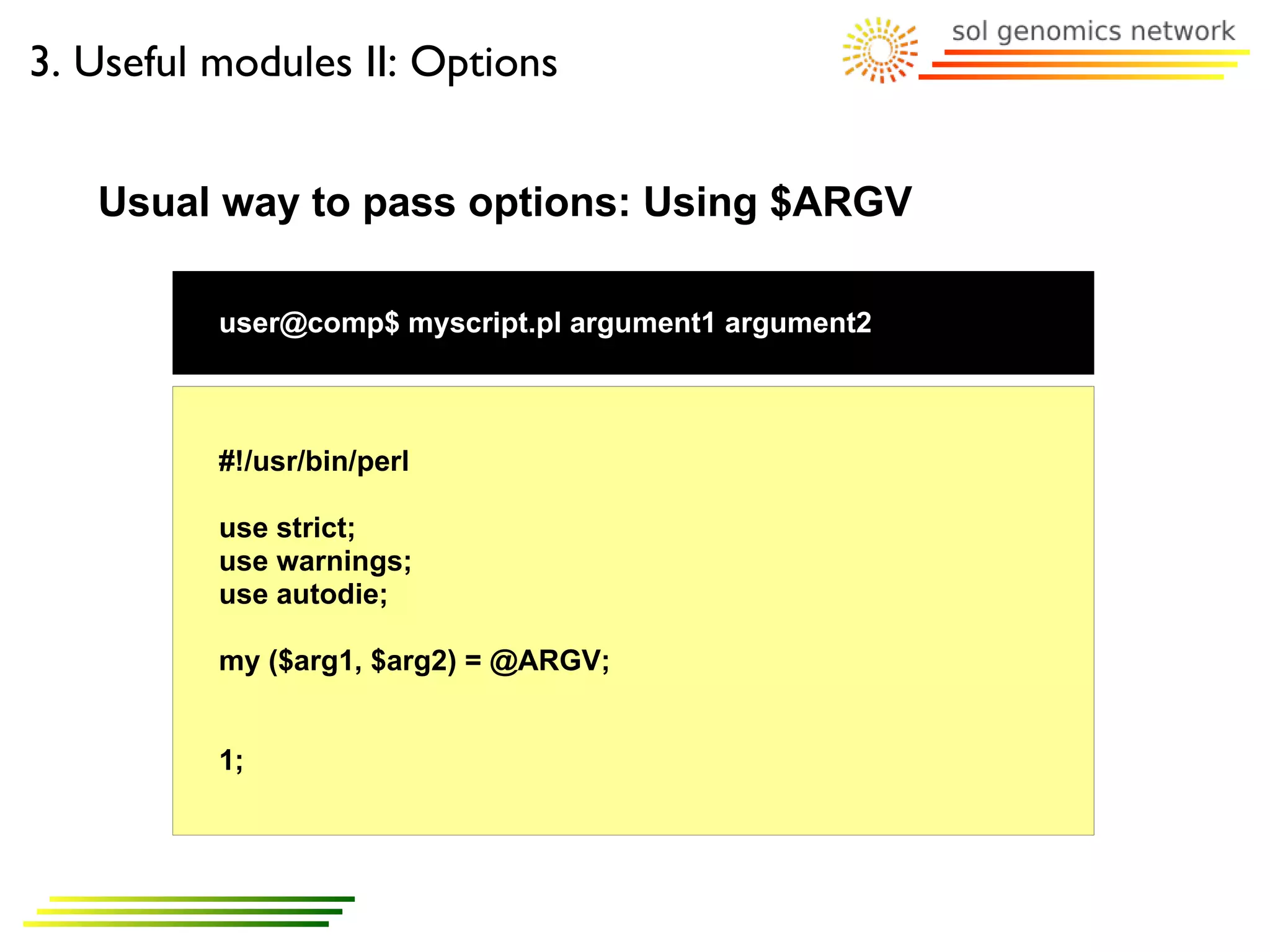

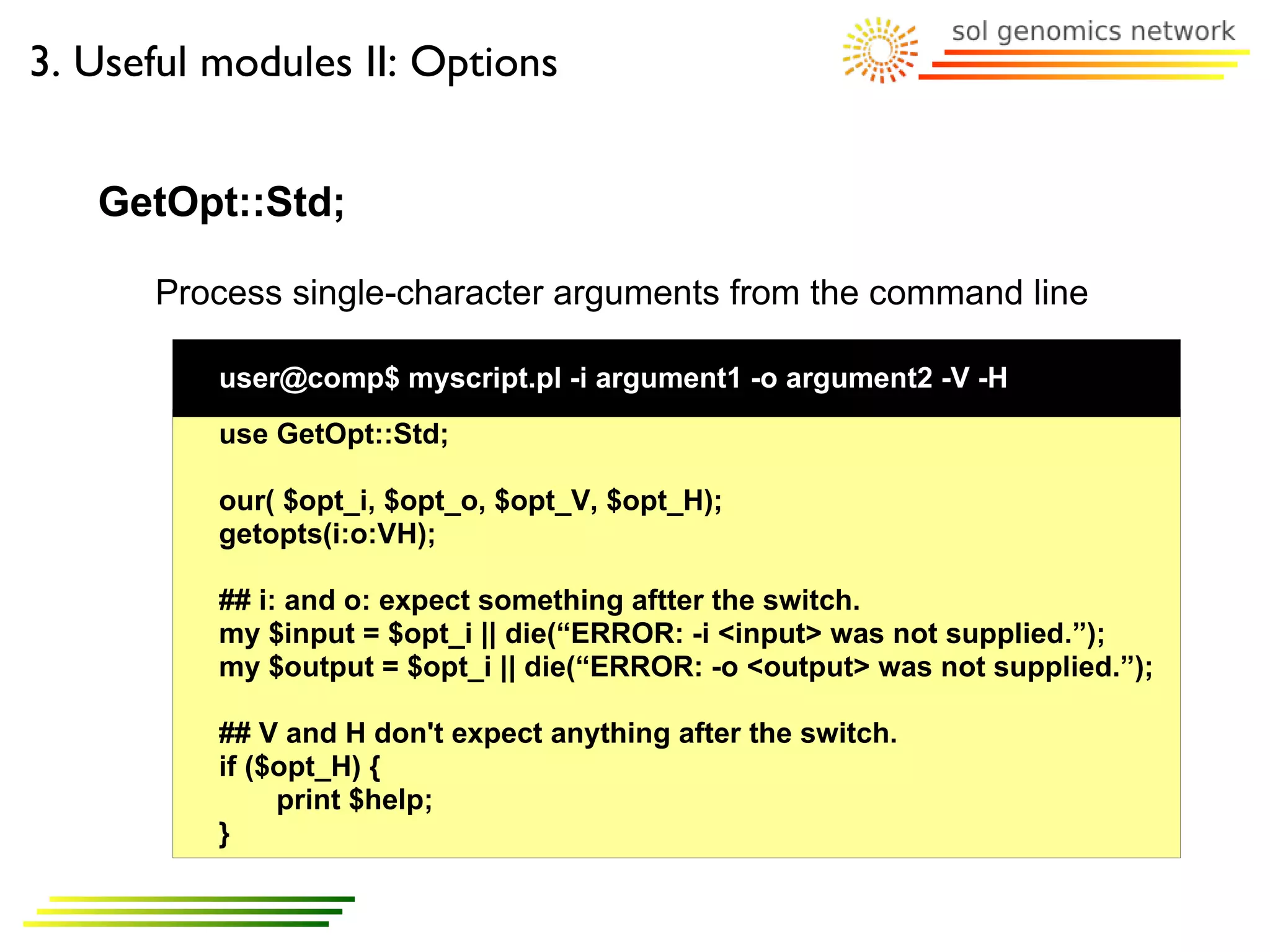
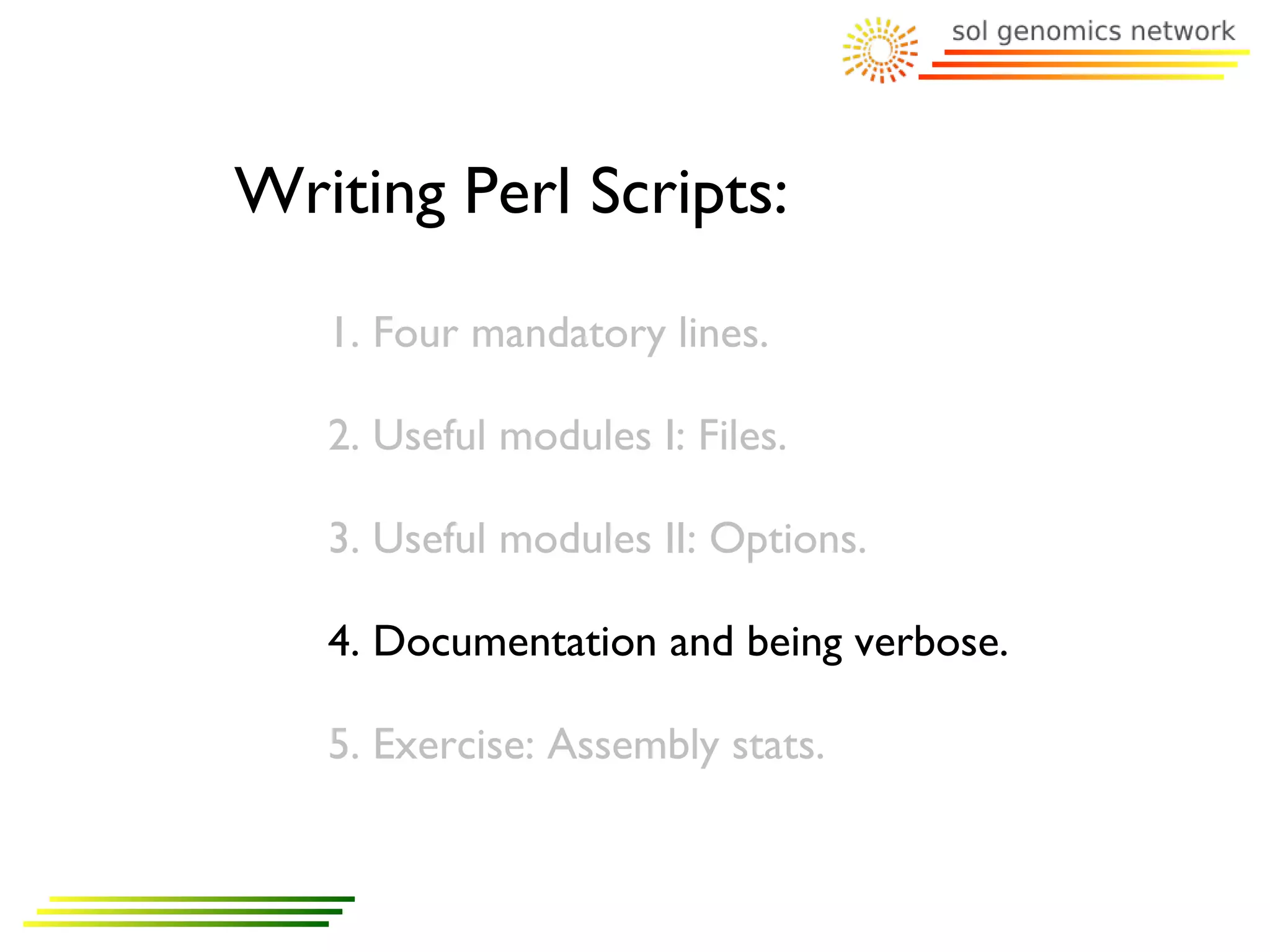
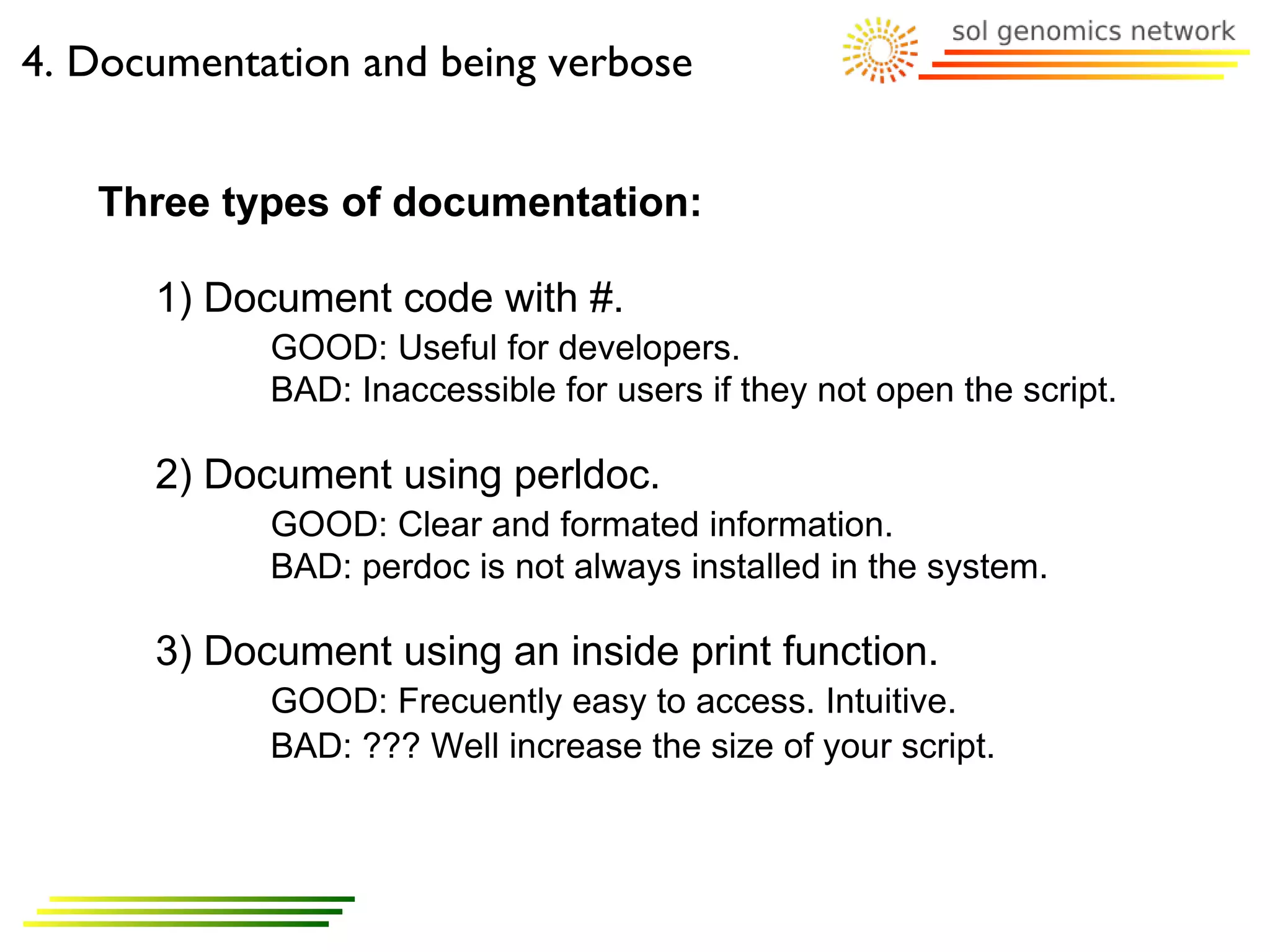
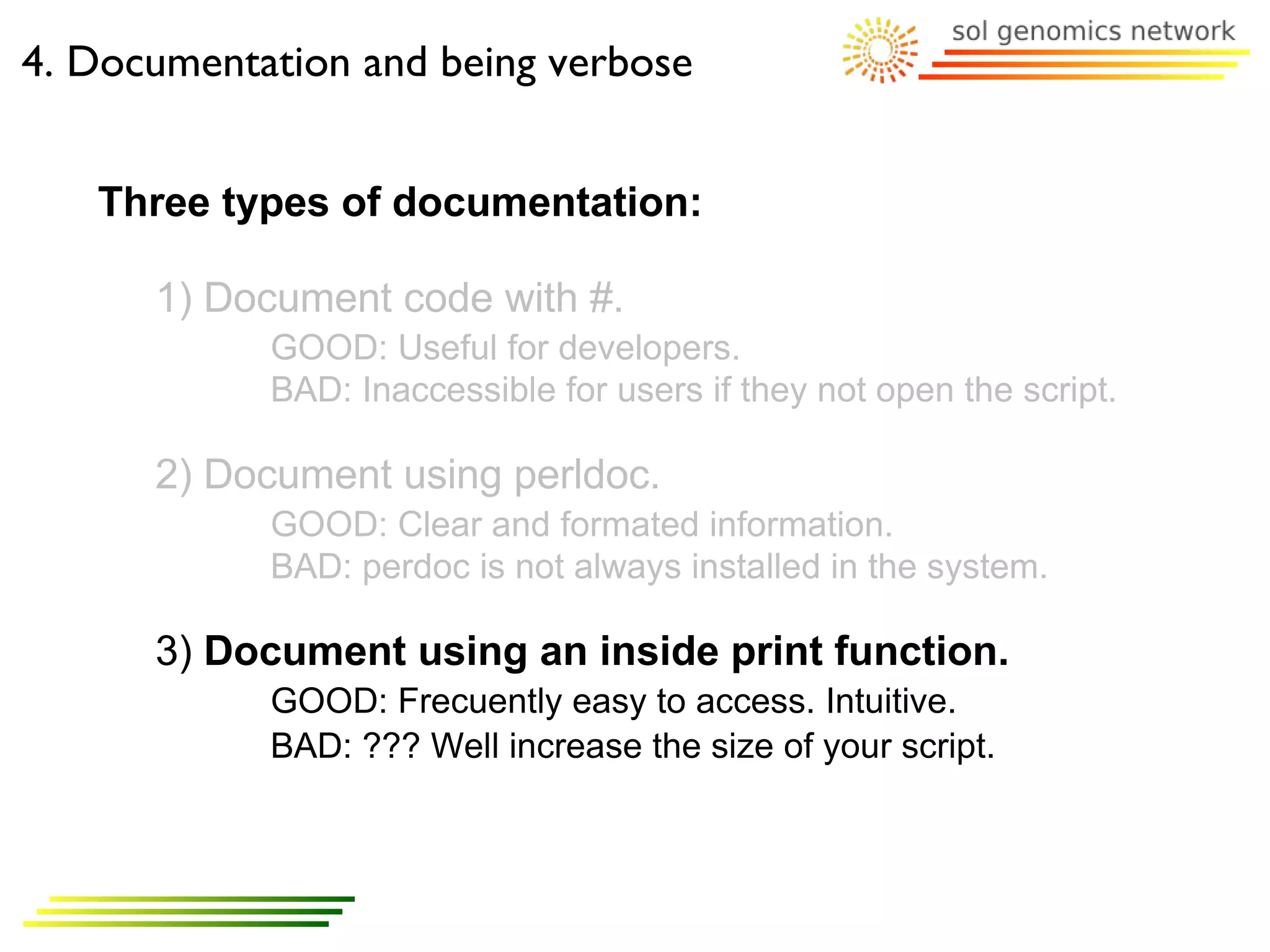
![4. Documentation and being verbose
Documenting through a function;
sub help {
print STDERR <<EOF;
$0:
Description:
My program description.
Synopsis:
myscript.pl [-H] [-V] -i <input>
Arguments:
-i <input> input file (mandatory)
-H <help> print Help.
-V <verbose> be verbose
EOF;
Exit(1);
}](https://image.slidesharecdn.com/10098576-111109224704-phpapp02/75/PerlScripting-20-2048.jpg)
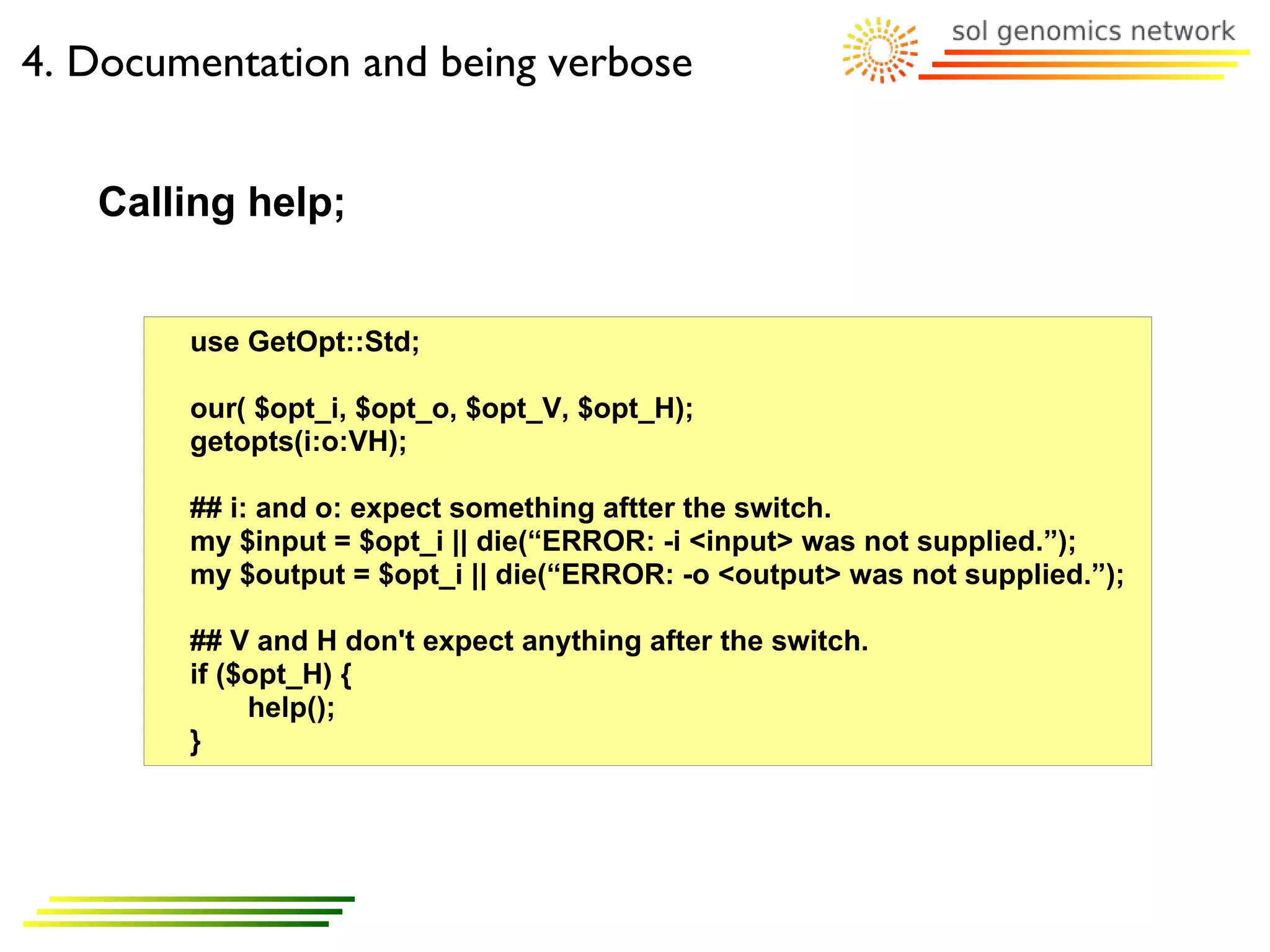
![4. Documentation and being verbose
Being verbose;
use GetOpt::Std;
our( $opt_i, $opt_o, $opt_V, $opt_H);
getopts(i:o:VH);
## i: and o: expect something aftter the switch.
my $input = $opt_i || die(“ERROR: -i <input> was not supplied.”);
my $output = $opt_i || die(“ERROR: -o <output> was not supplied.”);
if ($opt_V) {
my $date = `date`;
chomp($date);
print STDERR “Step 1 [$date]:ntParsing -i $input file.n”;
}](https://image.slidesharecdn.com/10098576-111109224704-phpapp02/75/PerlScripting-22-2048.jpg)
